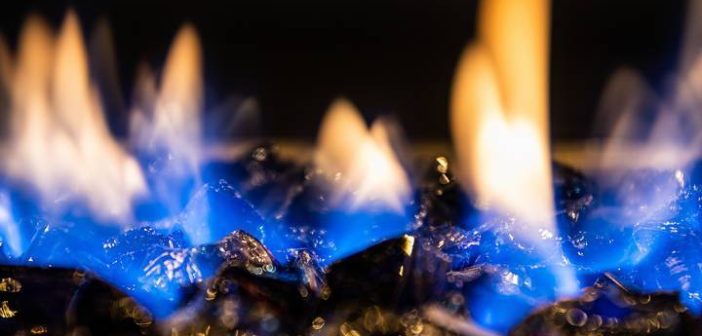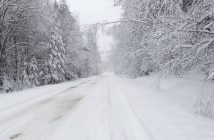Homeowners embrace propane fireplaces as a heating method during chilly weather. These fireplaces are safer and more efficient than wood-burning alternatives. However, taking certain precautions is still essential. You can protect yourself from propane fireplace mishaps by following best practices. It’s also wise to consult a seasoned propane company for additional guidance. Remember, safety begins with initiative!
Here are various safety tips tailored for propane fireplace users.
Safety Tip #1: Keep smoke and carbon monoxide detectors active.
Installing smoke and carbon monoxide detectors is one of the most effective propane fireplace safety tips. Keep these alarms active. Smoke and carbon monoxide detectors identify the smallest percentage of smoke or carbon monoxide in the atmosphere. Whenever your propane fireplace malfunctions without your knowledge, smoke and carbon monoxide detectors can alert you.
Safety Tip #2: Perform regular propane fireplace maintenance.
Regular upkeep is crucial for ensuring the safety of the propane fireplace in your home. You can follow your propane manufacturer’s guidelines for basic fireplace maintenance. However, enlist a professional for a thorough seasonal inspection. These specialists can conduct propane fireplace check-ups every three to four months for optimal safety.
This professional inspection includes identifying potential gas leaks and evaluating individual components’ condition. The expert also examines the ignition system, verifies proper ventilation, and conducts thorough maintenance. The objective is to confirm the safety features’ reliability and suggest any necessary repairs or upgrades.
Safety Tip #3: Supervise the propane fireplace while in use.
For safety, you shouldn’t leave an active propane fireplace unattended. Instead, enjoy the warmth while keeping a close watch. Leaving a propane fireplace unsupervised during use increases the risk of fire accidents as kids or pets move around. When finished with the device, please turn it off and let it cool before retiring to your other errands.
Safety Tip #4: Ignite the propane fireplace properly.
Many propane fireplaces have a built-in ignition button, while others require a long lighter. Sticking to the specific ignition method is essential, as the manufacturer’s guide indicates. You shouldn’t try DIY ignition styles on your propane fireplace, no matter how time-saving and effective they appear. Open flames and matchsticks should never be used when igniting this type of fireplace.
Safety Tip #5: Add safety screens to propane fireplaces.
Another practical tip is to add safety screens or gates to the propane fireplace for more protection. This technique is more viable in homes with young kids and pets as they play around the fireplace. Safety screens provide a barrier to the fireplace’s hot surfaces while it’s in use. A technician can install these screens skillfully or purchase a propane fireplace already equipped with screens.
Safety Tip #6: Keep flammable objects away from the fireplace.
You should keep flammable materials away from the propane fireplace, whether it’s in use or not. These include gasoline, acetone, petroleum, paint thinners, diesel, and hydrocarbons. Other sensitive materials may increase the risk near a propane fireplace. Avoid hanging décor, plastic items, toys, electrical cords, fabrics, and papers.
Safety Tip #7: Use high-quality propane fireplaces.
Quality matters for propane fireplaces. Premium propane fireplaces tend to have fewer malfunctions while boasting cutting-edge safety features. They ensure safety, deliver consistent performance, and guarantee dependability. When you purchase a high-quality fireplace, you’ll protect yourself from breakdowns that could cause fire accidents. Evaluate propane fireplaces and accessories through ratings and reviews.
Safety Tip #8: Work with a professional.
Handling a propane fireplace requires expertise, and not everyone can do it. Safety requires professionals during installation, maintenance, or repair. That way, you’ll eliminate the risks of fire accidents caused by mishandling and unprofessionalism. You can also check if they’re registered or certified to handle propane fireplaces and related devices.
In addition, a professional inspection is essential for monitoring damages or malfunctions. If your propane fireplace is vented, verify that the flues and chimneys work correctly. Also, check them out for dirt accumulation that could cause blockages. Running your propane fireplace without inspection poses a high risk of fire accidents.
Safety Tip #9: Educate children about fireplace safety.
Educating children about propane fireplaces can enhance safety. Discuss the best practices they should take whenever they suspect a fireplace malfunction. Inform them about the dangers of messing with a propane fireplace so they know their intensity. It would be helpful if you also practice the safety measures you teach.
Safety Tip #10: Allow the propane fireplace to cool after use
After turning off your fireplace, let it cool for 30 to 45 minutes before touching or leaving it unsupervised. Propane fireplace surfaces can retain heat for at least 45 minutes after turning them off. If you touch the surfaces during this time, you may experience intense burn accidents. Be careful and warn others in the household that the fireplace area is off-limits for the next hour.




